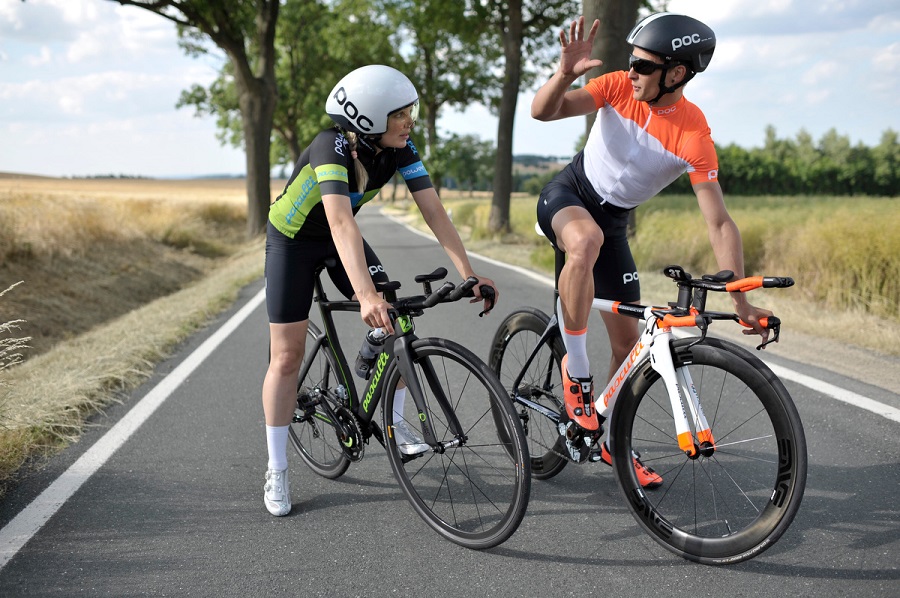Maximizing Your Cycling Performance with a Power Meter
A power meter can become a game-changer for those cyclists, who are aiming to improve their performance. It measures the power output in watts created by a rider. However, it brings the most, if a person dedicates time to understand the type of information delivered and incorporate it into one’s training. Hence, let me explain how one can do it.
Power meter basics
Primarily, it is vital to comprehend the meaning of power meter readings. Generally speaking, the greater the power output, the harder a cyclist is working. This parameter can be substantially more reliable than the biker’s heart rate. Hence, if you notice that you sustain around two-fifty watts on a flat road and start producing around four hundred watts when the road starts to go up, you can understand the intensity of your rides using this information. Following this advice, you will be able to adjust your training sessions and ensure that they are neither too complicated nor too easy.
Testing and defining your FTP
Secondly, a person should test their Functional Threshold Power to set appropriate training zones. Function Threshold Power, or FTP, is the most power an individual can cote for an hour. For that reason, a person needs to utilize a 20-minute maximal test and take 95% of their power average for this period . For instance, if a person ‘s average power for 20 minutes is 300W, their FTP is 285W.
Training using defined power zones
Thirdly, once a biker has their FTP, they may divide their training using the following power zones: recovery, endurance, tempo, threshold, VO2 max, anaerobic. Correspondingly, sneak out different training rides aimed at a specific zone. Notably, training with a focus on appropriate power zones delivers more opportunities to control the intensity of training. The rider’s endurance and speed will start improving quite markedly. Finally, one can take a look at their post-ride data to establish whether they were becoming stronger, as identical durations of power over a similar type of way should start improving with time.

How to Retrieve Data from Your Cycling Power Meter
The cycling power meter is an indispensable tool for monitoring performance, ascertaining big gains and maintaining cycling efficiency. As an educational part and reflection of its value, every enthusiastic athlete must know how to extract data and decide what it means. Therefore, it is necessary to provide a coherent list of instructions about how to download your power meter data, calculate it and improve your riding skills accordingly.
Download the data from your power meter
First, make sure that you have a power meter paired with an app on your smartphone or a bike setup on your bike computer and that all settings are accurate.
Second, complete your ride making sure to keep your power meter activated and recording.
Connect the device to your smartphone or computer using Bluetooth or USB as recommended by the available technology. For instance, a duo-disk mount for devices with USB ports would allow you to download and analyze your ride.
Meanwhile, turn on the app provided by the PM manufacturer or a platform to which ride data can be projected, such as TrainingPeaks .
In this case, the app would automatically pull the data from the ride onto the smartphone, which can then be synced to TrainingPeaks .
Dictate the Metrics
As a result, you download the data, and it is displayed on your computer screen.
- A graph generally shows some metrics, in this case, average power, peak power, cadence, and the time you stay in your established power zones. Different metrics provide you with distinct measures of your ride.
- Average power indicates the overall energy you applied to the ride, which explains your acceleration and the time spent on the ride.
- Peak power elucidates your maximum output, your potential as a sprinter.
- Cadence clarifies your pedaling effort when you push down . Classicists have an average cadence between 85 and 105 revolutions per minute.
Using and considering power output
When analyzing the power, compare these current data with the previous data you got from the other ride. If you have more time in the higher power zones, you might have improved your fitness and skill, which is a source of future development. If you are struggling or if the current data does not already show you the best , you have managed to reach the power you want, and your alarm signals should be modified. You should be informed of your abilities on a regular basis to boost your energy output by some training and gauge your progress correctly. If, for example, you aim to master climbing, you need to focus on the climb’s power output. Suppose you realize that you drop hard after the first 10 minutes of the climb. In that case, it might decide that you need some power strength and prepare to climb the intervals .
The Importance of Zero Offset
Be it your bike’s power meter or any other device; proper calibration is essential to get accurate readings from it. While preparing your meter for use, setting the zero offset is a crucial step about which every cyclist should know. However, in real life, it appears even more important than many consider. Let us have a detailed look at the reasons why proper setting of zero offset is effective and how to start it correctly.

What is That
Setting zero offset represents the process when the power meter is adjusted to provide a value of zero when no force is applied to the pedals. It is a kind of fine-tuning of power sensor to eliminate any environmental and mechanical factors which can affect measurements. The zero offset is like a baseline which compensates for the power meter accuracy shortfalls and ensures the correct work of the device.
Step-by-Step Guide
The process of setting the zero offset is relatively simple and should be done at the start of every ride. Here is what a cyclist should do to begin a session correctly:
Warm up your bike to its typical temperature and operating conditions by making a short ride.
Stop at a place where it is safe to dismount without kicking off or turning the pedals.
Remove any weight or force from the pedals. This means that weight taken from one of the pedals is placed on the other one.
Open the browsing function of the bike computer or the phone application where your power meter is connected.
Select the zero offset setting function. In most devices or apps, it can be found in the settings or maintenance options.
Wait untill the zero offset is set. In most cases, it is done in a couple of seconds, and the measuring device will provide you a warning signal.
Why Should You Care about Zero Offset
As you have seen from the example with the power meter, regular calibration ensures that the data one sees is reliable and accurate. Would be dreadful to find out that while taking a strictly regimented training session with three minutes at 300 watts, the power meter was not calibrated, and you were accidentally pushing for 320 watts. This would inevitably lead to overtraining. The same can happen during a race when inaccurate power data can force you to climb or descend too hard. Fixes only take about 10 seconds at the start of the session but can deliver invaluable benefits during the process.
Using Power Meter Data to Increase Training Intensity
Using a power meter is not about just reading numbers during a ride. It is more about raising the intensity of your training based on those numbers that would allow you to enhance your cycling performance. This part describes how you may increase your training intensity by interpreting the data your power meter provides and responding to it.
Interpreting the Data Your Power Meter Displays
First, you need to understand what the numbers displayed on your power meter mean:
Average Power: It is the wattage you have maintained throughout your ride on average and provides a good sense of your overall effort.
Normalized Power : This is the power you could have maintained for the same physiological cost if your power had been perfectly constant . NP is particularly useful when your effort is harder as fluctuations are more noticeable.
Power Zones: These are certain ranges of watts, typically a % of your FTP. Different zones target different adaptations.
Responding to the Data Wowing on the Screen
Then we may pass on to steps you need to make to correspond to the data shown by your power meter in order to raise your training intensity:
Find your FTP: It allows setting the power zones accurately and should be tested each 6 to 12 weeks using a testing protocol.
Provide specific power targets: Based on your FTP set clear wattages you need to train at. For example, for endurance durations, you may decide to deliver 10 minutes of your one-hour ride at 90-105% of FTP to raise your threshold power.
Monitor and adjust powering: Watch your power of the effort and maintain your power output within the targeted zone as it may require you to push harder on a climb or tone down a bit. Make sure you feel the intensity.
Practical Example and Explanation: Add a lead-in sentence here to introduce an actual example. For instance, let us imagine that you need to make intervals at 110% of FTP. . . .Do 5 x 4-minute intervals in your session. The watch displayed 285 wattages so I needed to deliver 250-275 watts to get closer to 275.
Please provide a proper practical example from this paragraph that you would adopt. Then follow the workshop examples like this one to continue your essay.
What Does It Prove
Thus, I may conclude that by increasing the intensity according to power meter data, you make your training both time-efficient and effective. It is easy to control the intensity and adaptation preventing you from both undertraining and overtraining. This logically structured increasing in workload allows you to build the endurance and strength needed for optimal cycling performance.




